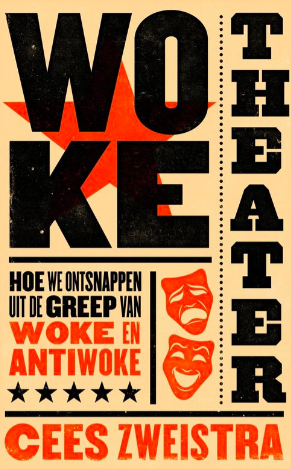Jan Bergstra & Laurens Buijs
Amsterdam Gender Theory Research Team
Cees Zweistra’s recent book is called Woke theater: How we escape from the grip of woke and anti-woke (2023). A smooth title that immediately indicates what the author is getting at: an interpretation of woke and anti-woke that invites one to seek a third alternative that offers more perspective. Zweistra sees woke and anti-woke both as exponents of belief in progress, especially belief in the value and possibilities of individual progress.
With woke then there is the extreme ideal that no one should be left behind and that everyone can stand on a large set of vested rights, anti-woke stands on the opposite ideal that everyone should stand up for themselves and be given the opportunities to do so. Zweistra notes that many more people call themselves anti-woke than woke. Apparently anti-woke needs woke to gain identity. Zwesitra is not impressed by the idea that woke threatens freedoms. He does not see that this would be the case in practice, nor is he impressed by the idea that anti-woke is conservative.

Anti-woke, in Zwierstra’s description, is a heterogeneous group in which the proponents of conspiracy theories receive ample attention. The fact that conspiracy thinking can also exist on the side of woke does not really come into play. At woke, the well-to-do feel at home, because it easily provides the self-image that you are okay in terms of views. But woke, in Zwierstra’s view, actually has no focus either, and a single simple example should make it clear what woke is about. The book is apparently written for readers who already have a clear idea of themselves at woke.
If woke and anti-woke both place too much emphasis on the individual then there is room for a third direction of thought and action. This book promotes that idea in a simple but compelling way. Three aspects arise in an alternative to woke and anti-woke:
- Attention to the role people have as heirs to a collective heritage.
- Interest in small things and actions.
- Interest in a good atmosphere.
There is something to this, for example, if we consider our own work on formal gender theory(FGT). Our work on FGT is anti-woke rather than woke, but we are still concerned with a third option: a MotR (or middle of the road) approach. In our work on FGT, we are looking to preserve the value of dividing people into male and female (countering gender erosion, see AGTRT-7).
We could see ourselves as heirs to those concepts that we do not like to see evaporate. And then it also immediately becomes clear that sometimes such concepts (male and female) need maintenance, giving those concepts a slightly different meaning (an idea that the Vatican manifesto lacks, see AGTRT-BF77).
We can also see ourselves as heirs to a world in which certain forms of gender transition are possible (an achievement of the last 75 years), and we would then want to preserve that, too, and there, too, it may turn out that the concept of gender transition needs maintenance.
The design of adapted concepts is then called conceptual engineering, and to do so in steps we call ICE(incremental conceptual engineering), a methodology we see as core to our work in gender theory (see also AGTRT-BF56).
Attention to small things and actions also plays a role for us, because from FGT we still want to be able to respond to any event regarding gender. In our view, an event is not easily “too small” or too insignificant to be worthy of attention. And any commentary on an event from FGT’s perspective also puts FGT to the test, as it turns out time and again.
Atmosphere between people is indeed vital, and we know by now that in both woke and anti-woke, atmosphere can turn over quite easily. Cancelling occurs at both ends of the spectrum and is not a trademark of woke.
We see Zweistra’s book as an enlightening addition to the available sources on woke and anti-woke that readers can certainly benefit from.
